FTC Disclosure: If you make a purchase via a link on this site, We may receive a small commission on the transaction - at no added cost to you. Thank you!
Bee Hummingbird
Scientific Name: Mellisuga helenae
The Bee Hummingbird has a special regal honor all its own!
It is considered to be the smallest bird in the entire world.
Yes, that’s right; I did say the entire world.
Even though we know that almost all hummingbirds are tiny (there are some exceptions), to be the smallest bird in the world does deserve the honor and fame it has been given.
We know that you might like to learn about this hummingbird. So we gathered as much information as possible about this genuinely amazing creature.
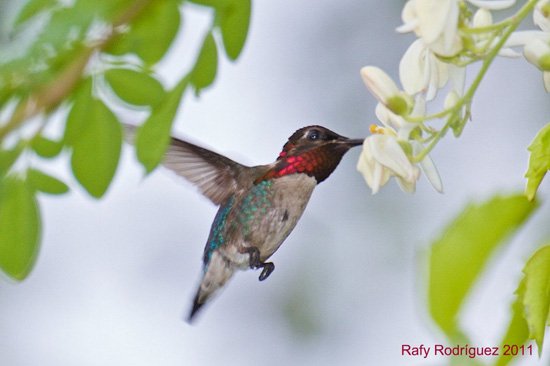
Bee Hummingbird - Male
As you may have guessed, these birds are comparable in size to the bumblebee. Females are a mere 6.1 cm long and weigh approximately 2.6 grams. Males are even smaller. They only grow to be 5.51 cm long weighing about 1.95 grams.
A Case Of Mistaken Identity
It is common for people all over the world to mistake an insect, the Hummingbird Moth, with the Bee Hummingbird. The Hummingbird Moth is a wonderful insect that resembles a hummingbird in appearance and behavior.
We receive emails every now and then from our visitors confusing the Hummingbird Moth with the Bee Hummingbird. We have built a page on this website dedicated to the Hummingbird Moth so you can distinguish the insect from the hummingbird.
Another less common error is to mistake this hummingbird for the Bumblebee Hummingbird of Mexico. This hummingbird has been proven to be slightly larger.
Make No Mistake
The Zunzuncito or Zunzun Hummingbird (Cuban names) only lives on the Caribbean Island of Cuba.
It has been spotted on the Isla da la Juventud , a large island off Cuba. A few of the adventurous ones have been seen in Jamaica and Haiti.
Being content with the lovely sub-tropical climate of these locations, these birds do not migrate elsewhere.
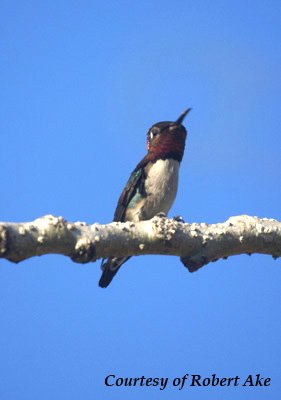
Physical Features of the Bee Hummingbird
Both males and females are chunky (like bees).
The breeding male has a fiery red gorget (throat). It’s under parts are grayish white.
The juvenile non-breeding males have the appearance of females. So it can be difficult to distinguish them apart.
You need to look closely at the wing tips which have blue spots. The wing tips of females have white spots.
Habitat:
Even though these miniature hummingbirds can live at either high or low altitudes, they prefer lowlands. Usually, they are seen along the coast, in the interior rainforest, and in suburban gardens.
Migration:
These hummingbirds do not migrate because of the climate they inhabit. They do move short distances because of changes in availability of high quality nectar from flowers during different seasons of the year.
Mating:
Living in a tropical climate, these hummingbirds mate after the wet season. They require the more abundant nectar of flowering trees and plants available during the dry season. Of course these flowers are for the extra food supply the female will need later for her young.
Excuse my humor but the male hummingbird does not court his females by bringing flowers for romance. Ladies you might find this as unromantic as I do.
The male hummingbird makes a series of high-pitched squeaks to attract his mate. What can I say?
More than one male will compete for a female. Unlike some other species, the mating ritual is not dramatic.
It normally occurs while perching or simply hovering in the air. Many hummingbirds engage in a theatrical acrobatic hummingbird mating dive.
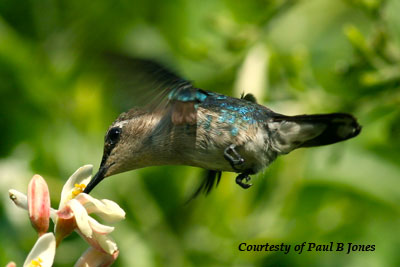
Bee Hummingbird - Female
Nesting:
The female builds the nest and typically lays 2 white eggs. The male plays no part in parenting. The female incubates her eggs for 14 to 23 days. These chicks fledge anywhere from 18 to 37 days.
NOTE: In the video below, notice the female collecting insects as she flies with her beak open and returns to the nest to feed her babies.
Also notice the size of the Bee Hummingbird in comparison to the size of the caterpillar. This is a good indication of the tiny size of the Bee Hummingbird.
Behavior:
These brave little birds are extraordinarily courageous against larger birds.
They are exceptionally fast fliers and have been clocked at 25 to 30 miles per hour.
They spend more time flying than any other species. All that flying coupled with a high body temperature causes these birds to feed almost constantly all day long. (Feeding on as many as 1,500 small flowers per day).
This bird cannot stay warm enough at night. It is simply too small to maintain its body temperature.
At night its uses a special adaptation called Torpor. This is a semi-migration like state that reduces its energy needs.
Food:
Spiders and other insects are a source of protein. They access high quality nectar from the gorgeous tropical flowers that grow abundantly in Cuba. Suburban residents supply feeders and nectar.
Here is a video of a Bee Hummingbird eating insects:
Lifespan
They are known to live a long life relative to some other species. They live as many as 7 years.
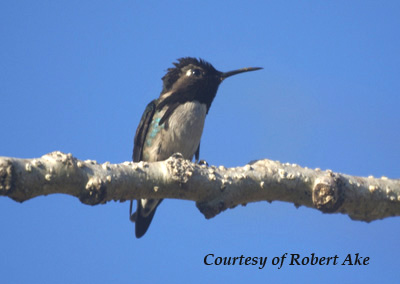
Conservation Ranking
Bee Hummingbirds are classified as "Near Threatened" to extinction on the Red List for birds in regard to conservation.
The loss of habitat is due partly to ranching and de-forestation. Also these ultra miniature birds are highly susceptible to storms and changes in climate.
I wrote to BirdLife International, which is the largest group of bird conservation organizations in the world. The following is an email from Andy Symes in regard to the endangered status of this hummingbird:
The latest update of the Red List is due May/June 2012. Please check back here for our update or visit the Birdlife International Website
|
Dear Ruth The Bee Hummingbird was originally classified as Threatened in the first Red List for birds in 1988 because there was no Near Threatened category at the time – just Threatened and Least Concern. The current Red List categories were introduced in 1994 at which point the Bee Hummingbird was reassessed as Near Threatened – so in this case the change resulted from a change in the categories and criteria, rather than a genuine reduction in the extinction risk of the species. The Red List categories are measures of extinction risk and in many cases a category change is based on improved knowledge of a species as opposed to genuine improvements or deteriorations in its status. For example, if a bird formerly classified as Critically Endangered is found at additional new locations it may be that its risk of extinction is more accurately assessed by placing it in the Endangered category, based on this improved knowledge of its status – even though it may still be declining and suffering increasing effects of threats throughout its range. I hope this makes sense – the Red List categories and criteria aim to be relatively simple and objective assessments but they aren’t always completely straightforward to get one’s head around! We carry out a comprehensive update of the Red List every four years and the latest update is due for release in May/June 2012 – do check back then for updated information and assessments of all threatened and near threatened hummingbird species. I hope this helps. Best regards Andy Symes |
NOTE: To clear this up, "Near Threatened", "Endangered" and "Critically Endangered" are categories of variable stages of extinction.
The latest update of the Red List is due May/June 2012. Please check back here for our update or visit the Birdlife International Website.
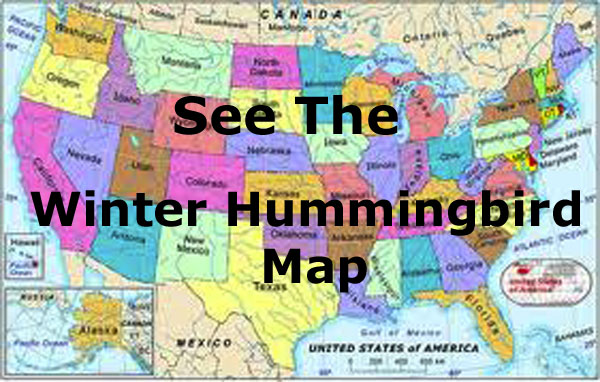

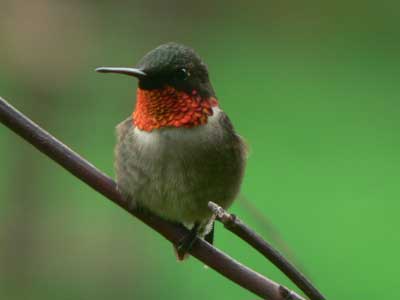







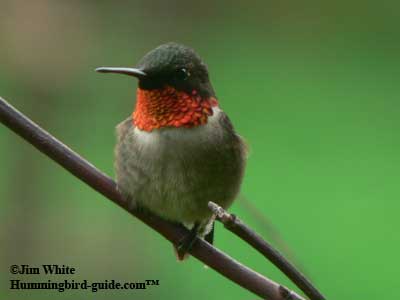
New! Comments
Have your say about what you just read! Leave me a comment in the box below.